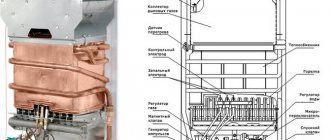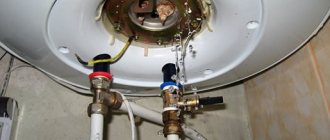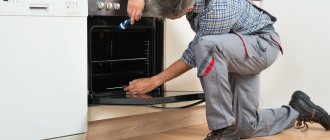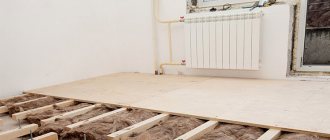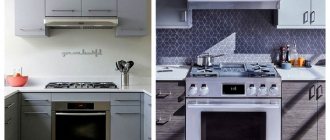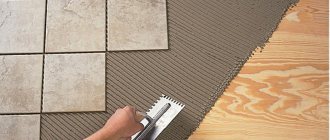Even a brand new gas oven is not a guarantee of excellent baking. At the preparation stage, the housewife may encounter many difficulties that she had not previously suspected. So, for example, the bottom of the oven can bake heavily, but the top will remain damp or dried out. Or, on the contrary, the oven below may not bake well and dry out the top. As a rule, all these problems can be associated with improper heat distribution in the oven. And most often, such malfunctions can be corrected independently.
What to do if a gas oven doesn’t bake well?
If the bottom burns, but the baked goods are not baked
One of the features of ovens is heating - it is difficult to regulate. In addition, improper heat distribution inside may occur, resulting in uneven cooking. This type of problem can be easily fixed on your own. There are several ways:
- a special baking stone is installed. It should be made of fireclay clay, which, due to its porous structure, absorbs the heat coming from the bottom of the cabinet and distributes it evenly throughout the oven. Some housewives, unable to find fireclay bricks, use regular red bricks. It has almost the same properties;
Correct heat distribution - regular rock salt can also be a great alternative to brick. Although it has slightly different properties, instead of absorbing heat and distributing it, salt lowers the temperature, allowing food to cook evenly. You only need one pack of rock salt, which is poured onto a baking sheet that is placed at the very bottom of the oven. Salt can be used for years, it does not deteriorate and does not absorb odors. Some housewives use ordinary quartz sand;
Salt for proper heat distribution - Water is also an excellent means of promoting proper heat distribution. However, this method is effective only in cases where the cooking time is short. Pour water into a baking tray or other large container and place the dish under baking. You need to keep an eye on the fumes.
Baking water
Faulty heating element
The electric oven chamber will heat unevenly if one of the heating circuit elements is damaged. The heating element is located, as a rule, under the bottom of the oven or its upper arch. Be careful, there is always a layer of glass wool between the chamber and the stove; do not work with it without protective gloves. In ovens with fans or built-in models, dismantling will be difficult, so we recommend entrusting this to specialists.
But in those electric ovens where the heating element is located inside the chamber, you can do everything yourself. Remove the screw in the center (as a rule, this is the only fastener), disconnect the wires and remove the heating element.
In general, the operating principle is as follows:
- Completely turn off the power to the stove.
- Remove the panels covering the heating element.
- Remove the center screw.
- Remove the contacts.
- Get the heating element.
- Take the tester and press the probe to the contacts of the heating element.
If the tester does not respond, then the element must be replaced.
Malfunctions and breakdowns of gas ovens
Any equipment can fail regardless of the time of use. There are malfunctions that can be dealt with at home without calling a specialist:
- If the model has automatic ignition. Sometimes it happens that it doesn't work. At the same time, you can hear that gas is flowing, but when pressed it does not ignite. This problem can be easily eliminated: just light a match and bring it to a special hole, which is located on the outside of the oven. However, you need to wait a while for the gas to evaporate from the cabinet.
- Ignition occurs, but after the handle is released, the oven goes out. Such a malfunction may be associated with a breakdown of the temperature regulator itself or the valve stem. To check, you need to carefully remove the handle and turn the rod.
- If the oven does not bake well and does not bake from below, you need to check the rubber seal. If the oven is an old model and has been in operation for a considerable time, the rubber seals may dry out and become deformed. All this leads to the fact that the oven may not reach the desired temperature. To check, just turn on the cabinet and place your hand under the door; if you feel warm, you need to replace the rubber seal.
Replacing the seal in a gas oven
- If the oven dries out the baked goods during cooking, you need to check the cleanliness of the gas burner. Sometimes, over time, the holes through which gas enters become clogged. To check, you need to turn on the oven and lift the bottom baking sheet; if the fire distribution is uneven, then you need to clean the burner. Do not use abrasive cleaning agents during this procedure as they may clog the gas passages.
Gas oven repair
What to do
You can figure out what to do if the bottom of your baked goods burns in a gas oven only by identifying the cause. Before using a gas oven, it is especially important to read the instructions carefully. It is included even with the simplest models. Some cookers only require the use of certain types of baking trays and trays, while others are designed to work with additional baking stones. This is the key difference between a gas oven and an electric one. You can use proven methods.
Consider the rules of use
Manufacturers' recommendations will help you get the perfect baked goods. Therefore, you need to familiarize yourself with the operating features of a particular model in advance. For example, some ovens cannot accommodate trays from another manufacturer or universal ones. They won't have the right holes or will take up too much space around the edges. As a result, air flows will be weakened and the temperature will no longer be uniform. If the bottom is constantly burning in the oven, and the top is pale, just find an original baking sheet and always use it to solve the problem.
Universal pallets can also be modified. For example, make additional holes or cut off the sides to enhance convection.
The simplest oven models do not provide additional heat distribution. Therefore, the instructions already indicate that it is necessary to change the baking position, especially with a large volume of dough. The manufacturer may also indicate the need for prolonged preheating. It is better to turn on the oven 30-40 minutes in advance, during which time the entire volume will warm up and the walls will gain the desired heat. After 20-30 minutes of baking, you need to lift the baking sheet along with the mold.
Select mode
Gas ovens are especially sensitive to temperature conditions. It should be taken into account that it is a little more difficult to achieve heat stability in them than in similar electric models. Therefore, it is better to lower the temperature a little to avoid burning the bottom. The larger the baking volume, the lower the temperature should be, but the longer the cooking time. On the contrary, for small products it is worth changing the parameters in the opposite direction so that the top is baked sufficiently.
Universal mode – 180 degrees. At this temperature, the bottom rarely burns in a gas oven. But to brown the top crust, you will have to raise the pie higher at least 15 minutes before the end of cooking. If the cake is tall, the maximum allowable temperature is 200 degrees. If it's pizza or tart, you should choose a mode of 220-240 degrees.
Old gas ovens are often characterized by incorrect temperature control. That is, it will actually be hotter inside than necessary. Therefore, you need to immediately select a lower temperature. It is also permissible to change the mode after the first 20 minutes to avoid burning, but to achieve uniform baking.
Find the right recipe
Each type of test requires a special approach. Traditionally, more problems arise with sponge cake. The dough should not only bake evenly, but also rise and remain airy. As a rule, the finished cake is cut into several parts and then covered with cream, so there is no need to achieve strong browning. The main danger is the raw middle. The housewife needs to ensure compliance with the basic rules, that is, do the following:
- beat the yolks and whites separately;
- completely dissolve the sugar without any residue;
- immediately put the dough in the oven after kneading;
- reduce temperature after 15 minutes of baking.
Initially, you do not need to set the biscuit to the maximum possible mode. A dense crust will form on top, it will not allow the mass to rise, as a result, the cake will turn out low and too dense. 200 degrees is enough even for a large mold.
If you need to make a tall cake or several cupcakes, it is better to divide the entire mass into two molds of larger diameter.
Shortbread dough can be just as troublesome. It will quickly brown on top even in a gas oven, but it will definitely burn if you knead it incorrectly. There is no need to use whites, but you should definitely add high-quality butter with a high fat content. You cannot knead the mixture for too long, it will be too dense and as if “rubbery”. It is this kind of baked goods that burns on the bottom.
Yeast pies made from a gas oven are especially loved by both adults and children. Baked goods may not rise. Both the top and the middle often remain raw. In this case, you need to pay attention to the recipe and calculate the amount of flour. If there is too much of it, the dough will “clog”, the yeast simply will not be able to release the required amount of oxygen to raise such a mass. Therefore, it is better to make the dough a little more fluffy. To prevent the bottom from burning and the top from baking, it is worth increasing the proofing time. In a gas oven, dough that is not sufficiently saturated with oxygen quickly sets into a crust, which leads to burning.
To make truly flaky baked goods in a gas oven, you need to increase the cooking temperature. The best mode is 230-250 degrees. In this case, special attention should be paid to the convection of hot air. Then the layers will separate, will not stick together, and the entire surface will be quite dry. If this does not help, you need to pay attention to the kneading technology. In puff pastry, you should use cool butter, not kneading it, but cutting it with a knife.
Butter baked goods also often burn in a gas oven, but due to the large number of eggs and the presence of soda or baking powder. The risen mass quickly increases in volume, so it does not have time to bake. It is important to immediately put the pie in the oven after kneading, so the filling must be prepared in advance. To prevent the bottom from burning, you need to reduce the temperature and cover the top with foil. Open to form a golden brown crust 15 minutes before the end of cooking.
For any type of dough, you can use molds with a hole in the middle. They are especially good for gas ovens.
Rules for using the oven
Regardless of the type and type of oven, there are certain rules that must be followed. And this applies not only to safety precautions, but also to cooking rules. Quite often, the cake burns on the bottom and dries out on top not because of a malfunction of the cabinet, but because of its improper use. So, if your gas oven doesn’t bake well and you don’t know what to do, check whether you are using it correctly:
- Before you start cooking, you need to check that everything has been removed from it.
Sometimes a burnt bottom and an unbaked top may not indicate a poor temperature in the chamber, but simply the presence of foreign objects in the cabinet that interfere with the proper distribution of heat. How to cook in a gas oven - Before starting the cooking process, the oven must be warmed up well at high temperatures. It is enough to set the oven to maximum for only 10 minutes. After this, the desired temperature is set.
- The baking tray with baked goods should be placed in the middle of the cabinet so that there is enough space for air circulation inside.
- The cause of a burnt bottom may be due to the door being open during cooking. You need to monitor the process through a special viewing window.
- If the peculiarity of your oven is that the lower part is heated excessively, then the baking sheet should be placed slightly higher than the middle to bake the upper part.
No matter how good of a cook you are, it's best to read the instructions that come with each model before using your new oven. Since each oven may have its own characteristics, which you may not know about.
How to use the oven
Faulty switch
If a gas or electric oven does not respond to turning the switch, it should be changed. Or rather, the whole panel. For this:
- Disconnect the equipment from the network.
- Remove the plastic handles.
- Unscrew the screws and completely remove the panel.
- Unscrew the fasteners from the mounting plate where the switches are located.
- The screws may turn if the switch is faulty.
- Remove the lugs from the wires.
- Install the correct part.
Other Causes of Failed Baking
Sometimes it happens that after using various methods to normalize the temperature, the bottom of the baked goods burns, but the top remains damp. Then we can say that there are other problems:
- If the bottom of the dough burns, but the dough itself remains raw, there are two reasons that can lead to such consequences: the wrong temperature was chosen or the dough was made incorrectly. A special feature of biscuit dough is that the whites must be beaten separately. Then it will be lush. It is strictly forbidden to place the dough in a cold cabinet. Before starting cooking, you need to set the temperature to high and put the dough, after 10 minutes it can be reduced to 170 degrees;
Rules for using the oven - You need to choose the right temperature during cooking. Every dish needs the correct temperature, and if it is not observed, the dough will burn on the bottom and remain raw on top. For example, meat or fish should be cooked at a temperature of 180 degrees. Dishes in foil need higher temperatures. Buns, donuts and many other baked goods are best cooked at a high temperature of 220 degrees.
Heating element burnt out
Symptoms: The top or bottom heating element of the oven remains cold after being turned on.
One of the most common reasons for an oven not working is a burnt-out heating element: upper or lower heating element. You can check them visually: a working heating element should not have any dark spots, swelling, cracks or other mechanical damage; after turning on the oven, the heating element becomes red-hot. For more accurate diagnostics, the heating element must be “ringed” with a special device. A burnt heating element will have to be replaced. By the way, in modern stoves one burnt-out heating element can block the entire electric stove from turning on.
Operating principle of electric ovens
The purpose and operation of electric ovens are similar to classic gas ovens. Electrical appliances are also intended for cooking (baking, roasting, grilling). The standard equipment includes baking trays, a tray, racks and guides that ensure safety when removing dishes from the cabinet.
As a rule, electric ovens are equipped with two tubular heating elements (heating elements) - upper and lower (for example, in electric stoves of the Lysva series). This is necessary to achieve the optimal temperature, which helps ensure even cooking. You can use both heating elements or one of them, depending on the baking conditions required by the recipe. However, there are also universal ovens equipped with three or four heaters.
Heating elements are made from high-strength alloy steel, which is associated with harsh operating conditions (high temperature). Also, heavy-duty material is required for the heaters of such ovens, where the “Grill” function is implemented, since they are often subject to regular cleaning with strong chemically active substances used to remove fat and carbon deposits.
The heating element for an electric stove oven is not a unified element that fits all models. Each manufacturer (Indesit, Whirlpool, Electrolux, etc.) develops original heater designs, trying to achieve optimal cooking conditions for various products (heating, circulation and distribution of hot air inside the working volume of the oven). In addition, many well-known manufacturers equip electric ovens with infrared heaters, which are turned on in the “Grill” mode (model Hansa fccw5).
There are a large number of heating elements that differ from each other:
- configuration and overall dimensions;
- power;
- version (single- or double-circuit);
- purpose (grill, top, side, bottom, etc.).
The upper heating elements are especially diverse. The design of the bottom heaters is much simpler. As a rule, they are single-circuit and have a simple configuration.
Prevention
Long-term, trouble-free operation of an electric oven is only possible if you comply with the requirements set out in the product operating instructions and carefully care for it after each cooking. In this case, it is recommended to wash the oven chamber with warm water with the addition of a small amount of dishwashing liquid. After finishing the oven treatment, the internal surfaces must be wiped dry.
Important! When cleaning the glass surfaces of an electric oven, the use of cleaning agents containing abrasive additives is not allowed.
